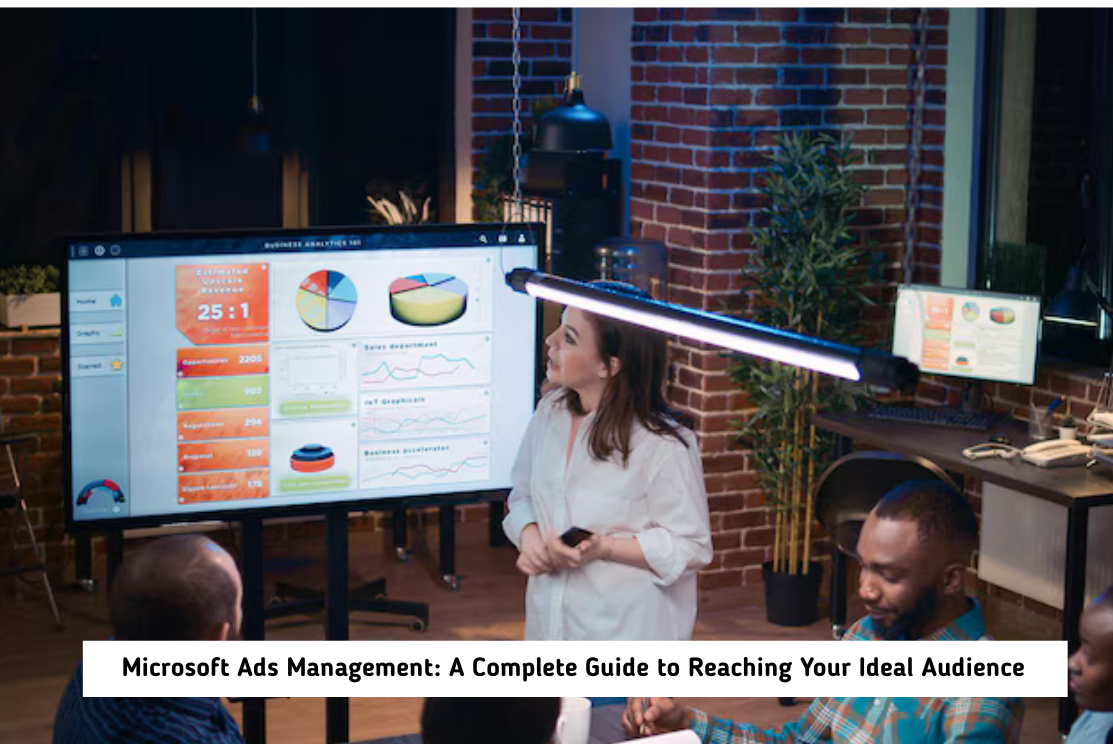Beyond Google: The Power of Microsoft Ads Management for Business Growth
When it comes to digital advertising, most marketers instinctively think of Google. But here’s the truth: the Microsoft Search Network which includes Bing, Yahoo, MSN, and partner sites reaches millions of potential customers every day. With Microsoft Ads Management, businesses can tap into this lesser-used but highly effective platform to drive cost-efficient, high-quality leads.
In this article, we’ll unpack how Microsoft Ads works, who it’s for, and why strategic ad management is essential to get the most from your campaigns.
What Is Microsoft Ads?
Microsoft Ads (formerly Bing Ads) is a pay-per-click (PPC) advertising platform that enables businesses to display search, shopping, and display ads across Microsoft-owned and partner websites. Much like Google Ads, it allows you to bid on keywords, display ads in search engine results, and target specific demographics and geographic locations.
What Sets Microsoft Ads Apart?
It’s all about the audience reach, cost-effectiveness, and unique targeting options, which we’ll dive into shortly.
Why You Shouldn’t Ignore Microsoft Ads
While Google holds the lion’s share of the search market, Microsoft controls over 30% of the desktop search traffic in the U.S. and a growing chunk worldwide. That includes older, affluent users, many of whom are decision-makers in their businesses or industries.

Key Advantages of Microsoft Ads:
- Less competition than Google Ads
- Lower CPCs (cost-per-click) in most industries
- A more mature, professional audience
- Unique B2B targeting through LinkedIn profiles
- High intent traffic, especially on desktop
For many industries, particularly B2B, legal, finance, and home services, this network is a goldmine.
What Is Microsoft Ads Management?
Microsoft Ads Management refers to the complete oversight and optimization of your advertising campaigns on the Microsoft platform. This includes:
Key Responsibilities of Microsoft Ads Management:
- Building structured campaigns
- Performing keyword research
- Writing and testing ad copy
- Managing bids and budgets
- Tracking results and optimizing performance
- Leveraging Microsoft-specific targeting features
Without proper management, it’s easy to waste ad spend or miss key performance opportunities.
Key Components of Successful Microsoft Ads Management
Let’s walk through the elements of a well-managed Microsoft Ads strategy:
Essential Elements of Microsoft Ads Management:
- 1. Strategic Account Structure A clean, goal-oriented structure lays the foundation. Organizing your campaigns by service type, location, or audience ensures easier tracking and better control over performance.
- 2. Smart Keyword Strategy Microsoft users may search differently from Google users. That’s why keyword research should be tailored for Bing’s ecosystem. Long-tail keywords, phrase match types, and negative keyword lists are crucial to prevent irrelevant clicks.
- 3. Persuasive, Customized Ad Copy Ad copy must speak directly to user intent. You’ll want to create multiple versions of headlines and descriptions that align with both Bing’s algorithm and your target customer’s mindset.
- 4. Landing Page Consistency Even the best ads won’t convert without strong landing pages. A/B testing, mobile responsiveness, fast load speed, and focused calls to action can dramatically improve your conversion rates.
- 5. Bid Adjustments You can set custom bids based on device, location, time of day, and even audience. Knowing how to use this flexibility wisely is where Microsoft Ads Management really shines.
- 6. Audience Layering This platform stands out with LinkedIn Profile Targeting, enabling you to target users based on their company, industry, or job function. For B2B marketers, this is a game-changer.
Microsoft Ads vs. Google Ads: Not a Replacement A Supplement
Contrary to popular belief, Microsoft Ads isn’t about replacing Google. It’s about complementing it.
Feature Comparison:
| Feature | Microsoft Ads | Google Ads |
|---|---|---|
| Reach | 30-40% desktop users | Largest search share |
| CPC (Cost per Click) | Generally lower | Higher in competitive niches |
| Audience | Older, higher-income, B2B-oriented | Broader demographic |
| Unique Features | LinkedIn targeting, lower CPCs | Extensive ad extensions |
| Best Use | B2B, finance, legal, industrial | Mass consumer targeting |
For well-rounded digital strategies, running both Google and Microsoft Ads and managing them distinctly is often the most profitable route.
The Value of Expert Microsoft Ads Management
So, why hire a Microsoft Ads Manager or agency instead of doing it in-house?
Benefits of Professional Management:
- Expertise & Efficiency Navigating Microsoft Ads’ dashboard, campaign options, and reporting tools takes time. An expert cuts the learning curve and starts optimizing from day one.
- Data-Driven Decision-Making Effective managers continuously monitor performance metrics like CTR, conversion rate, Quality Score, and ROAS (Return on Ad Spend). They make data-backed adjustments weekly or even daily.
- Better Budget Allocation Instead of wasting money on low-converting keywords or audiences, a skilled manager allocates funds to what’s working — and shuts down what’s not.
- Targeting Mastery Knowing how to use Microsoft’s advanced targeting — including LinkedIn audience filters and device-level bidding — can dramatically improve ad effectiveness.
- Ongoing A/B Testing Top-performing campaigns don’t happen overnight. They result from continuous testing of ads, landing pages, headlines, and CTAs. Professionals never stop refining.

Who Should Use Microsoft Ads?
Microsoft Ads is perfect for:
- Professional service providers (lawyers, doctors, accountants)
- B2B companies
- Software and tech firms
- Local service providers (especially where Bing has higher desktop usage)
- E-commerce brands targeting affluent audiences
Even if you’re seeing success on Google, you may be missing a whole market segment on Microsoft.
How to Get Started with Microsoft Ads Management
Here’s a quick action plan:
- Set up your Microsoft Ads account (or import from Google Ads).
- Identify your goals—leads, sales, traffic, or calls.
- Research keywords specific to the Bing audience.
- Create compelling ads with multiple versions for testing.
- Link to optimized landing pages that match your ad intent.
- Track conversions via UET tags (Microsoft’s version of tracking codes).
- Monitor & optimize weekly—or hire a professional to handle it for you.
Final Thoughts
While Microsoft Ads may not have the size of Google, it has undeniable strategic value — especially when paired with expert campaign management. With lower costs, unique targeting options, and access to a valuable demographic, it’s a must-have platform for businesses ready to diversify and grow.
Whether you’re a small business or an enterprise, proper Microsoft Ads management could be your untapped growth engine. Ready to reach more customers at a lower cost?

